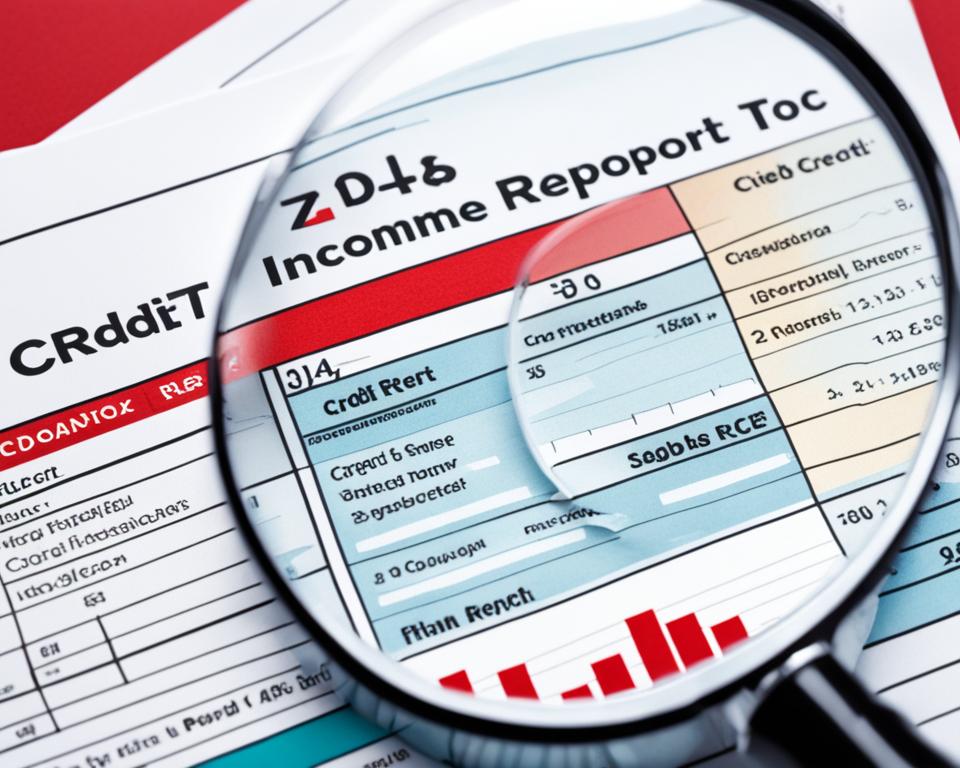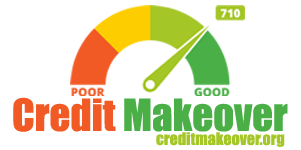Embarking on the journey toward financial stability often involves evaluating various debt consolidation options. It’s a move that can simplify a person’s financial landscape and could lead to significant savings on interest payments. With an array of types of debt consolidation, from balance transfer cards to consolidation loans, individuals in the United States have the opportunity to choose a path that best suits their unique financial scenarios. Understanding the debt consolidation methods available is key in tailoring a plan that not only offers debt relief options but also aligns with long-term financial health. Among the myriad of debt consolidation solutions, one may find the ideal strategy that promises a clearer route to settling outstanding balances through well-structured debt consolidation plans.
Key Takeaways
- Assess various debt consolidation methods to find the right fit.
- Understand how different types of debt consolidation can impact financial well-being.
- Consider debt relief options that align with individual financial situations.
- Explore debt consolidation solutions that may lead to reduced interest rates and payments.
- Choose debt consolidation plans that offer a streamlined approach to debt management.
Understanding Debt Consolidation
In a world of increasing financial complexity, debt consolidation emerges as a beacon of clarity for those navigating the stormy seas of debt management. By merging various liabilities into a singular obligation, debt consolidation strives to present a financial landscape that is easier to survey and manage. This consolidation is not merely a strategy but a step towards financial stability and peace of mind.
Defining Debt Consolidation
At its core, debt consolidation involves the amalgamation of multiple debts—be it credit card balances, loans, or medical bills—into one streamlined payment with a potentially lower interest rate. The elegantly simple objective: to make monthly payments more manageable and reduce the total cost over time. Surveying what are the different types of debt consolidation options available is the first critical step for those considering this path to financial wellness.
The Process and Impact on Finances
Embarking on the consolidation journey presents a straightforward process with profound implications for your finances. It typically begins with securing one larger loan to cover the sundry debts one has accumulated. This singular loan will, ideally, carry a more favorable interest rate and offer a consistent monthly payment. The impact? Not just simplified bookkeeping, but tangible savings through reduced interest payments, providing room to breathe and plan for a future unencumbered by financial duress.
Consolidation vs. Other Debt Management Strategies
When placed side by side with other debt management strategies, consolidation stakes its claim as a powerful tool that distances itself from the more drastic measures of debt settlement or bankruptcy. While options such as budgeting and negotiating for lower rates are valuable tactics in the debt management arsenal, consolidation leads with its capacity to keep debt manageable without inflicting significant wounds on your credit score. Weighing the various debt consolidation choices against one’s personal fiscal circumstance is vital in outlining a successful and comprehensive debt management plan.
In assessing the plethora of consolidation pathways, one must consider their eligibility for each option, the potential for diminishing high-interest debt, and the alignment of any chosen strategy with long-term financial goals. It’s a balancing act of savvy decision-making and future-focused financial planning.
Benefits of Consolidating Your Debt
Embracing debt consolidation offers tangible advantages for those seeking financial reprieve and enhanced money management. This strategic move aims to simplify your financial obligations and pave the way for a more secure fiscal future. Delving into the primary benefits, we see how they can manifest in substantial savings and improved fiscal health.
Streamlined Monthly Payments
One of the principal debt consolidation benefits is the consolidation of multiple payments into a single, manageable monthly payment. This not only helps to avoid missed or late payments but also simplifies budgeting, making financial planning less of a hassle.
Opportunity for Lower Interest Rates
With the potential to save on interest, debt consolidation can be particularly advantageous for individuals holding high-interest debts. By negotiating lower interest rates, you can ultimately reduce the amount paid over the life of your debts, keeping more money in your pocket.
Improved Credit Utilization and Score
Another significant advantage is the opportunity for a credit boost. Consolidation often leads to improved credit utilization ratios, a key factor in calculating credit scores. By paying off revolving lines of credit and maintaining the accounts open with zero balances, credit utilization is reduced, which can positively impact credit ratings.
Setting a Fixed Repayment Schedule
A fixed repayment schedule aids in establishing a clear timeline to faster debt payment. Unlike revolving credit with constantly changing payments and uncertain payoff dates, a consolidation loan provides structure and predictability, allowing borrowers to see the light at the end of the debt tunnel.
Consolidating debts is more than just combining numbers; it’s about achieving a state of financial efficiency where streamlined payments lead to a reduction in stress and an increase in satisfaction with your financial journey. As we navigate through the benefits, the emphasis on financial control and the potential for peace of mind cannot be overstated. The power to reshape one’s financial destiny begins with informed decisions and strategic actions like debt consolidation.
Debt Consolidation Methods Explained
Choosing the right debt consolidation method is crucial for effectively managing and combining multiple debts into a single payment. Individuals looking for debt relief have several options, each with unique features suited to different financial situations. Understanding these methods is the first step toward deciding which one aligns best with your financial goals.

Balance Transfer Credit Cards
Balance transfer credit cards are often sought after for their introductory offers, featuring low or even 0% APR for a limited time. This can provide significant savings on interest charges, making it easier to reduce debt faster. However, it’s essential to pay off the balance before the promotional period ends to avoid higher APRs that typically follow.
Personal Consolidation Loans
For a more structured approach, debt consolidation loans can offer fixed rates and a clear repayment term. These personal loans allow borrowers to combine several high-interest debts into one manageable monthly payment, often resulting in lower overall interest paid and a quicker path to being debt-free.
Home Equity Loans and HELOC
Home equity loans, and Home Equity Lines of Credit (HELOCs) take advantage of the equity you have in your property to offer lower interest rates. They are secured by your home and can provide a significant amount of funding. It’s important to consider the long-term commitment, as defaulting on these loans could put your home at risk.
Peer-to-Peer Lending
Peer-to-peer (P2P) loans bypass traditional financial institutions by connecting borrowers directly with investors. These platforms can offer more flexible eligibility criteria and rapid funding. However, the interest rates on P2P loans may be higher, especially for those with lower credit scores, making it an important consideration.
Criteria for Choosing a Consolidation Option
Embarking on the journey of debt consolidation can be empowering if done thoughtfully. Central to finding solace in this financial strategy is choosing the best debt consolidation strategy tailored to your unique situation. It’s a decision that arises from a comprehensive review of your financial health and a realistic appraisal of competitive interest rates in relation to the long-term benefits they may offer. Let’s delve into what factors you should consider.
Assessing Individual Financial Situation
One’s financial landscape is as diverse as the debt consolidation solutions available. A thorough examination of your debts, including their types and the amounts owed, becomes the first critical step. The nuances of each debt type could significantly influence the consolidation roadmap, making this initial financial x-ray a pivotal piece of the puzzle.
Comparison of Terms and Interest Rates
As important as it is to assess one’s debts, equally crucial is the scrutiny of the terms and competitive interest rates offered by potential consolidation options. It is here, in the minutiae of terms, where the cost-effectiveness of consolidating debt is unearthed, helping to ensure that one’s fiscal load lightens, rather than compounds over time.
Understanding the Credit Score Influence
Converging at the heart of debt consolidation options is one’s credit score. It can be both a gateway and a barrier to accessing the most advantageous rates and terms. Comprehensive credit score assessments serve as a critical determinant in the matrix of debt consolidation possibilities, often dictating the pace and path of financial recovery.
What are the different types of debt consolidation options available?
When seeking financial respite from multiple debts, consumers have a variety of debt consolidation options at their disposal. Each choice, when selected carefully, can pave the way to debt relief and fiscal stability. Among the types of debt consolidation, some common solutions include:
- Balance Transfer Credit Cards – These cards offer promotional introductory rates, helping individuals pay down credit card debt faster by reducing the interest accumulated during that period.
- Home Equity Loans and HELOCs – As secured loans, these leverage a homeowner’s equity to procure funds, often at a lower interest rate. HELOCs offer a line of credit versus a lump sum for more flexible borrowing.
- Unsecured Personal Debt Consolidation Loans – Such loans don’t require collateral and may offer fixed interest rates and payment plans, streamlining multiple debt payments into one.
- Peer-to-Peer Lending Platforms – These platforms connect borrowers with investors willing to lend funds, often more quickly and with different eligibility criteria than traditional banks.
- Debt Management Plans – Offered by credit counseling agencies, these plans assist in negotiating down interest rates and consolidating payments without the introduction of new loans.
Every debt consolidation choice is unique, offering its own set of benefits for various financial scenarios. Those evaluating debt relief options should consider the features and potential risks of each one:
Understand your financial needs and objectives thoroughly to make an informed decision. Selecting an inappropriate consolidation option can potentially exacerbate rather than mitigate financial distress.
Considerations, including the duration of debt, the amount owed, interest rates, one’s credit score, and tolerance for risk (particularly with secured loans), are all pivotal in determining the most appropriate path to debt consolidation.
Identifying Eligibility for Different Plans
When embarking on the journey of debt consolidation, determining your debt consolidation eligibility upfront can provide a smoother path towards financial stability. Lenders typically consider several factors during the evaluation process to establish whether an individual qualifies for their debt consolidation solutions.

Evaluating Credit History and Scores
One of the primary factors affecting eligibility is an individual’s credit history evaluation. A strong credit background reflects a history of timely payments and responsible credit management, which can be compelling to lenders. Furthermore, credit scores serve as a numeric summary of one’s creditworthiness, where higher scores may unlock preferential interest rates and terms.
The Role of Income and Debt-to-Income Ratio
Income levels and the debt-to-income ratio are also instrumental in assessing eligibility. A stable and adequate income assures lenders of an applicant’s ability to uphold new credit agreements. The debt-to-income ratio, which represents the share of income directed towards debt repayment, is a critical threshold that lenders scrutinize.
| Financial Aspect | Impact on Eligibility | Lender’s Perspective |
|---|---|---|
| Credit History | Indicates repayment reliability | Less risk in offering consolidation |
| Credit Score | Affects interest rates and terms | Higher scores enable better offers |
| Income Stability | Ensures capability to repay | Favors consistent and sufficient income |
| Debt-to-Income Ratio | Should be low to manage new debt | Prefer applicants with ratio below 36% |
By meeting these financial criteria, individuals amplify their chances of successfully navigating the waters of debt consolidation. Ensuring your financial standing aligns with lender expectations is paramount in pursuing the goal of reclaiming your fiscal freedom.
Balance Transfer Credit Cards: A Closer Look
When assessing debt consolidation options, the allure of balance transfer credit cards frequently catches the eye of those burdened with high-interest credit card debt. These cards offer enticing introductory APR offers that can provide significant savings and a strategic avenue to becoming debt-free. Understanding the intricacies of these offers and crafting an effective balance transfer strategy is essential for anyone considering this option.
In-depth Analysis of Introductory APR Offers
An introductory APR offer on a balance transfer credit card typically features a 0% or markedly reduced interest rate for a promotional period, which can range anywhere from 6 to 18 months. This can provide a much-needed reprieve from interest accumulation, especially when dealing with high APRs on existing credit card debt. However, it’s imperative to consider the timeframe and aim to repay the transferred balance within this window to avoid facing the standard, often higher, interest rate post-promotion.
Pros and Cons of Balance Transfer Cards
These credit cards come with a mix of advantages and drawbacks that must be carefully evaluated. One of the primary pros is the potential for significant interest savings during the introductory period. Moreover, simplifying multiple debts into a single payment can enhance financial management. On the flip side, users should be wary of potential balance transfer fees and the spike in APRs after the introductory phase. These factors must be weighed to gauge the viability of a balance transfer card for your unique financial circumstances.
Optimizing Your Strategy Post-Balance Transfer
Success with a balance transfer card involves more than just moving your debts; it requires a robust post-transfer strategy. After securing the initial relief from high-interest rates, the focus should shift to aggressively paying down the balance before the normal APR takes effect. This might also involve budget adjustments and avoiding new debt accrual to ensure that the benefits of the transfer are fully realized.
| Balance Transfer Feature | Pros | Cons |
|---|---|---|
| Introductory APR Offer | No or low interest during the promotional period | Interest rate spike after promotion ends |
| Single Monthly Payment | Simplified debt management | Potential for a high post-introductory regular APR |
| Transfer Fees | A one-time fee that could be lower than accrued interests | Usually 3-5% of the total transferred amount |
| Post-Introductory Strategy | Opportunity to become debt-free faster | Requires disciplined budgeting and repayment |
Home Equity Solutions for Debt Consolidation
Exploring home equity to consolidate debt utilization has proven to be a strategic approach for many homeowners, allowing them to tap into the value of their property to regain control over their finances. With potential benefits like lower interest rates and extended repayment terms, the use of home equity loans and HELOC (home equity line of credit) stand out as reliable routes in achieving substantial debt relief. However, the decision to leverage home equity must come with a cautious evaluation of the accompanying risks.
Difference Between Home Equity Loan and HELOC
Understanding the nuances between a home equity loan and a HELOC is paramount for any homeowner considering the equity pathway for debt consolidation. The former usually arrives as a lump sum with a fixed interest rate, offering predictability in repayments. In contrast, a HELOC operates similarly to a credit card, providing a revolving credit line at a variable rate, granting flexibility in borrowing and repayment.
Advantages of Secured Debt Options
When we talk about secured debt options such as these home equity products, we’re looking at advantages such as potential access to larger amounts of credit and possibly more manageable interest rates compared to unsecured borrowing methods. This can facilitate a more comprehensive and effective home equity debt consolidation strategy for eliminating outstanding liabilities.
Risks and Considerations of Using Home Equity
Yet, the consideration of using one’s home as collateral is not without consequence. The substantial risk of home loss in case of default, changes in tax laws impacting interest deductibility, and the potential for long-term cost accrual must all weigh heavily in the decision-making process. Homeowners must gauge these risks against the palpable benefits to arrive at a well-informed decision.
Maximizing your home’s equity could be the key to reining in debt, but it’s a door that requires cautious entry and a clear exit strategy.
| Home Equity Solutions | Features | Advantages | Risks |
|---|---|---|---|
| Home Equity Loan | Lump sum, Fixed rate | Predictable payments, Lower interest rate | Home as collateral, Long-term cost |
| HELOC | Revolving credit, Variable rate | Flexibility in funds, Potentially larger credit line | Interest rate changes, Risk of over-borrowing |
Unsecured Debt Consolidation Loans
Exploring unsecured debt consolidation loans — including personal loans and peer-to-peer lending services — can be a pivotal step for individuals looking to manage a plethora of debts. With no collateral required, these loans are a beacon of hope for borrowers aiming to simplify their financial commitments. In particular, personal loans and peer-to-peer lending platforms are well-trodden paths that offer flexibility and variety in funding options to suit diverse financial needs.

Features of Personal and Peer-to-Peer Loans
Personal loans from traditional financial institutions and peer-to-peer lending services are designed to fuse multiple debt payments into a singular, manageable loan. Individuals often benefit from rapid approval processes, with loan amounts customized to encapsulate the entirety of their unsecured debts. It is the individual’s creditworthiness that stands at the forefront, guiding the interest rates and terms of these loans.
The Importance of Loan Terms and Interest Rates
When considering an unsecured debt consolidation loan, the magnifying glass must be held up to the details of loan terms and interest rates. These factors hold the key to understanding the longevity of the loan alongside the possible financial impact due to changes in interest over time. A fixed interest rate offers predictability in payments, whereas a variable rate may introduce uncertainty, underscoring the need for meticulous assessment.
Navigating Lender Options and Services
In the quest for the right debt consolidation partner, borrowers must tread carefully, discerning lender credibility and the full scope of their services. With the debt consolidation loan market being fertile ground for unscrupulous entities, vigilance in identifying origination fees, prepayment penalties, and the overall reputation of the lender is paramount. The ideal lender not only offers competitive rates but also transparency and guidance tailor-made for the borrower’s financial landscape.
Debt Management Programs and Plans
When burdened by multiple debts, sometimes taking out another loan isn’t a viable option. In such cases, debt management programs stand out as a beacon of hope. These are carefully structured plans designed to address your financial obligations without the need for additional borrowing.
Collaborating with established credit counseling agencies, individuals are empowered to tackle their debts head-on through a strategic repayment plan. This collaboration lays the groundwork for a sustainable financial future, ensuring debts are managed without accruing new ones.
How Debt Management Plans Function
Debt management plans (DMPs) are synonymous with structured financial recovery. They involve more than mere routine payments; DMPs are about crafting a path to financial freedom. By consolidating your payments into one monthly installment, these plans make it easier to manage finances and foresee a debt-free horizon.
Benefits of Working with Counseling Agencies
Counseling agencies play a pivotal role, offering debt consolidation plans tailored to ease the financial strain. Their guidance is invaluable, not just in mapping out the journey but also in mitigating the stress associated with managing complex debts. They may negotiate terms with creditors that could result in lower interest rates or waived fees.
| Benefits | Details |
|---|---|
| One Monthly Payment | A singular monthly payment replaces multiple bills, simplifying budget management. |
| Negotiated Interest Rates | Agencies may work to lower your interest rates with your creditors. |
| Waived Fees | Late fees or over-limit charges can potentially be waived as part of the agreement. |
| Financial Education | Credit counseling agencies usually provide resources and education on better financial habits. |
| Consolidated Debt Management | Allows for efficient handling of debts without the need to take on new loans. |
While debt management programs can have a temporary impact on credit scores, particularly if credit accounts are closed, they serve as a robust foundation for long-term financial stability—potentially making them a safer alternative compared to other far-reaching options like debt settlement or bankruptcy.
Exploring New Debt Consolidation Lenders
The landscape of financial solutions for managing and reducing debt is ever-evolving, with debt consolidation lenders at the forefront of innovation. Offering an array of debt consolidation solutions to address diverse fiscal needs, these entities are redefining what it means to achieve competitive debt consolidation. As they surpass traditional offerings, their unique features significantly impact the decision-making processes of those grappling with debt.
Emerging Trends in Debt Consolidation Solutions
The newest players in the debt consolidation market are fast distinguishing themselves by providing tailored features such as hassle-free direct payments to creditors. These features, along with attractive rate discounts and flexible repayment terms, are indicative of the dynamic and consumer-centric approaches these lenders employ. The ability to select and customize solutions based on personal needs makes these competitive debt consolidation options appealing to a wider range of borrowers looking for effective ways to manage their financial obligations.
Profiles of Competitive Debt Consolidation Lenders
When delving into the profiles of standout debt consolidation lenders like Upgrade, SoFi, and Best Egg, it becomes evident that each offers a distinctive set of advantages. Upgrade is recognized for its straightforward loan approval process, while SoFi captivates borrowers with additional member benefits and strong digital experiences. Best Egg, on the other hand, may pique the interest of those seeking fixed-rate loans with various term options. Let’s consider these competitive debt consolidation providers in detail:
| Lender | Highlighted Feature | Product Flexibility | Customer Experience |
|---|---|---|---|
| Upgrade | Direct Payment to Creditors | Moderate | User-friendly Interface |
| SoFi | Rate Discounts & Member Benefits | High | Comprehensive Mobile App |
| Best Egg | Fixed Rate Loans | High | Quick Funding Times |
As consumers continue to navigate the intricacies of consolidating their debts, the emergence of these lenders stands as a testament to the industry’s shift towards more adaptive and consumer-friendly offerings. The key lies in aligning the unique advantages and possible drawbacks of each lender with one’s personal financial situation, a strategy that promises the most favorable outcomes for managing and overcoming debt.
Prepare Before Consolidating
Before one leaps into the world of debt consolidation, it’s imperative to perform several preliminary steps that will pave the way for a smooth financial transition. Preparing for debt consolidation is much like setting the stage before the main act, ensuring that every detail aligns with the vision of a debt-free life. It begins with a meticulous appraisal of the current debt landscape and continues through the establishment of a structured strategy for financial improvement.
Steps to Take Before Choosing a Consolidation Path
To choose the most effective consolidation path, individuals should diligently review all their debts, making note of the terms and interest rates attached to each. Understanding these specifics is not only crucial in choosing the right consolidation avenue but also in foreseeing the adjustments that will be required in one’s financial life. After this comprehensive analysis, one should match the potential consolidation outcomes with personal financial goals, ensuring that the consolidation plan supports long-term fiscal health and stability.
Setting Realistic Financial Goals and Budgeting
Effective budgeting strategies often dictate the success of any financial venture, including debt consolidation. Establishing realistic financial goals—a critical step in preparing for consolidation—equip individuals with clear milestones and the motivation to achieve them. Crafting a budget that incorporates the new consolidated loan payment, as well as other existing financial obligations, is vital. This budgetary exercise not only facilitates the repayment plan but also provides an opportunity to correct any spending behaviors contributing to the initial debt, fostering more responsible financial habits moving forward.
FAQ
What are the different types of debt consolidation options available?
The various debt consolidation options include balance transfer credit cards, personal consolidation loans, home equity loans and HELOCs, peer-to-peer lending, and debt management plans offered by credit counseling agencies.
How does debt consolidation affect my finances?
Debt consolidation can streamline your monthly payments, often reduce overall interest rates, provide a fixed repayment schedule, and may improve your credit score over time by improving your credit utilization ratio and payment history.
What are the advantages of consolidating debt?
Advantages of debt consolidation include streamlined payments, the potential for lower interest rates, improved credit utilization, and setting a fixed repayment schedule, all of which can contribute to a faster debt payment and a credit boost.
How do I choose the best debt consolidation strategy?
Choosing the best debt consolidation strategy requires assessing your financial condition, comparing terms and interest rates of various options, and understanding how your credit score influences your options and interest rates.
What should I consider when evaluating my eligibility for debt consolidation plans?
When evaluating eligibility, you should consider your credit history, credit scores, your income stability, and your debt-to-income ratio, as these factors determine your ability to secure favorable loan terms.
Are there any risks to using balance transfer credit cards for debt consolidation?
Yes, while balance transfer cards can offer low introductory APRs, they may come with fees, and the interest rate may spike after the promotional period ends. This option requires discipline to repay the debt within the introductory period.
What is the difference between a home equity loan and a HELOC?
A home equity loan provides a lump sum at a fixed interest rate, while a HELOC offers a line of credit with a variable interest rate, allowing you to borrow as needed up to a certain limit over time.
How do debt management programs work?
Debt management programs involve collaborating with credit counseling agencies to create a manageable monthly payment plan. These plans may lower interest rates and waive fees across multiple debts without taking on new loans.
What are the emerging trends in the debt consolidation industry?
Emerging trends include the introduction of new lenders with tailored features such as direct payment to creditors, multiple rate discounts, and flexible repayment terms. Innovation and customer-oriented services are also gaining traction.
What steps should I take before consolidating my debt?
Before consolidating debt, review all of your current debts, understand terms and interest rates, align your consolidation goals with personal financial objectives, and establish a realistic budget that includes the consolidated loan payments.





